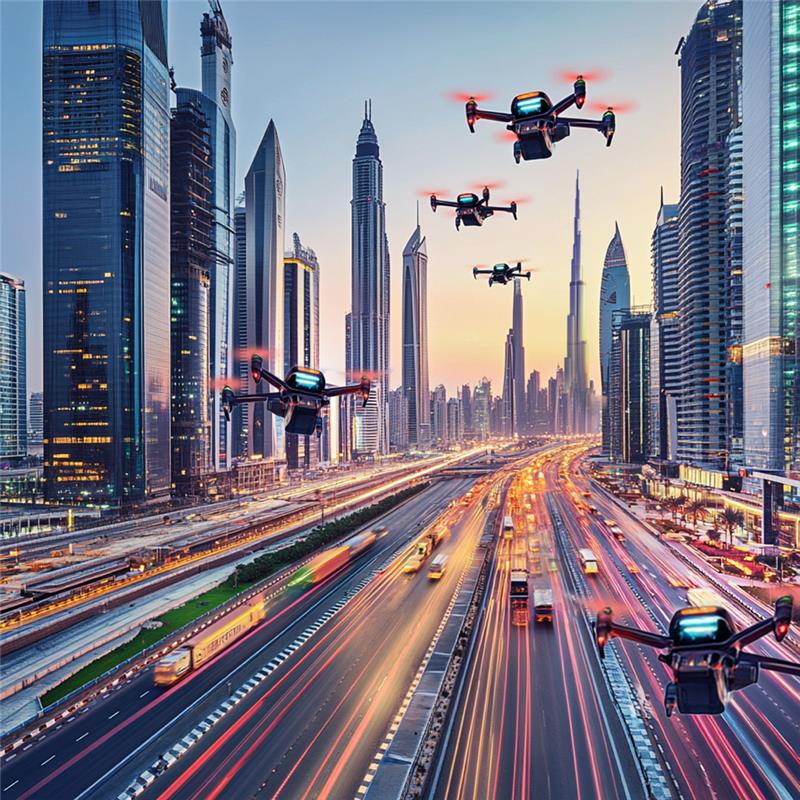New Initiative Goals to Rework City Transportation
The United Arab Emirates (UAE) has launched an initiative to develop air corridors and regulatory frameworks for piloted and autonomous air taxis and cargo drones. This effort, led by the Normal Civil Aviation Authority (GCAA) in collaboration with the Superior Know-how Analysis Council (ATRC) entities—Know-how Innovation Institute (TII) and ASPIRE—goals to reshape city transportation and improve connectivity.

Growing Aerial Corridors and Laws
The UAE’s plan consists of mapping aerial corridors and drafting laws inside the subsequent 20 months. These routes will join key airports and main places, supporting seamless integration of air taxis and cargo drones into the nation’s infrastructure. Officers see this as a step towards relieving visitors congestion whereas selling sustainable and environment friendly transportation options.
His Excellency Saif Mohammed Al Suwaidi, Director Normal of the GCAA, emphasised the importance of this growth: “Air hall mapping for piloted and autonomous air taxis and drones is a vital milestone that may allow the seamless implementation of Superior Air Mobility into the UAE’s infrastructure. This initiative ensures the protected and environment friendly adoption of air mobility, delivering transformative options to city transport and paving the way in which for a wiser, extra linked future.”
TII and ASPIRE’s Function in Air Mobility
TII will concentrate on airspace administration, guaranteeing the protected integration of piloted and autonomous plane into city areas. These new corridors are anticipated to ease stress on conventional street networks and supply a versatile transport system.
Dr. Najwa Aaraj, CEO of TII, highlighted the collaboration’s influence: “This transformative collaboration with GCAA is reshaping the way forward for city transportation. By advancing airspace administration and integrating piloted and autonomous air taxis and cargo drones, we’re not solely enhancing city connectivity but additionally driving sustainable and accessible mobility options that may profit future generations.”
ASPIRE’s function consists of constructing a community of stakeholders, together with regulators, researchers, and trade representatives. The objective is to make sure that the regulatory framework aligns with security requirements and operational effectivity.
Stephane Timpano from ASPIRE acknowledged: “Addressing real-time city mobility challenges via modern options like air taxis and drones is a serious step ahead. This initiative straight helps sustainable financial progress by creating a versatile and numerous transport system that eases stress on city infrastructure and fosters smarter, extra resilient cities.”
AI and Automation in AAM Improvement
The UAE’s method to Superior Air Mobility (AAM) depends on AI-driven automation. TII is engaged on superior management, imaginative and prescient, and communication algorithms to assist real-time decision-making for air taxis and drones.
Prof. Enrico Natalizio, Chief Researcher at TII’s Autonomous Robotics Analysis Middle, defined: “At TII, we’re growing superior AI-powered management, imaginative and prescient and communication algorithms for autonomous methods that allow real-time decision-making for air taxis and drones. Having mastered this know-how, we’re in a position to suggest methodologies for AAM corridors design to optimize routes, guarantee collision avoidance, and combine seamlessly with city airspace, marking a key step towards environment friendly and protected autonomous air mobility in advanced city environments.”
The settlement was introduced on the World Governments Summit 2025, marking a essential step towards implementing a totally built-in aerial transportation community within the UAE.
For extra data, go to GCAA, TII, and ASPIRE.
Need DRONELIFE information delivered to your inbox each weekday? Enroll right here.
Learn extra:


Miriam McNabb is the Editor-in-Chief of DRONELIFE and CEO of JobForDrones, an expert drone providers market, and a fascinated observer of the rising drone trade and the regulatory atmosphere for drones. Miriam has penned over 3,000 articles targeted on the industrial drone house and is a world speaker and acknowledged determine within the trade. Miriam has a level from the College of Chicago and over 20 years of expertise in excessive tech gross sales and advertising for brand spanking new applied sciences.
For drone trade consulting or writing, E mail Miriam.
TWITTER:@spaldingbarker
Subscribe to DroneLife right here.

